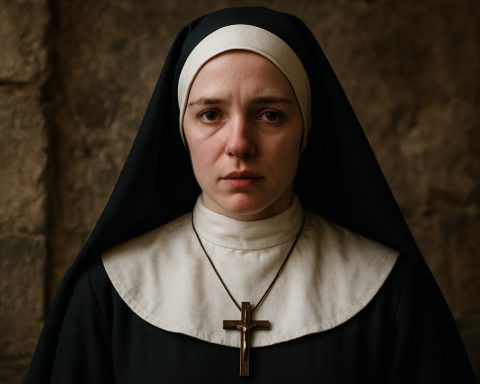Inside Nunsploitation Cinema: Exploring the Shocking Blend of Sacred and Profane. Discover How This Controversial Genre Redefined Religious Taboo on Screen.
- Origins and Historical Context of Nunsploitation
- Defining Characteristics and Iconography
- Key Films and Influential Directors
- Themes of Sexuality, Power, and Repression
- Religious Controversy and Censorship
- Cultural Impact and Legacy
- Modern Interpretations and Revivals
- Sources & References
Origins and Historical Context of Nunsploitation
Nunsploitation cinema emerged in the late 1960s and flourished throughout the 1970s, primarily in Europe, as a provocative subgenre of exploitation film. Its origins are deeply intertwined with the broader social and cultural upheavals of the era, particularly the sexual revolution, the questioning of religious authority, and the relaxation of censorship laws in countries like Italy, Spain, and France. These films drew inspiration from earlier literary and artistic depictions of transgressive nuns, such as Denis Diderot’s 18th-century novel “La Religieuse,” but reimagined them through the lens of modern exploitation cinema, emphasizing eroticism, violence, and taboo-breaking narratives.
The historical context of nunsploitation is rooted in the complex relationship between Catholicism and European society. The Catholic Church’s pervasive influence, especially in Southern Europe, provided fertile ground for filmmakers to explore themes of repression, hypocrisy, and forbidden desire. The genre often set its stories in convents during periods of religious and political turmoil, such as the Counter-Reformation or the Inquisition, using these settings as microcosms for broader societal anxieties about authority and sexuality. The films typically featured young women forced into convent life, where they encountered sadistic Mother Superiors, corrupt priests, and supernatural or psychological torment, reflecting both anti-clerical sentiment and fascination with the forbidden.
Nunsploitation’s rise was also facilitated by the international success of films like Ken Russell’s “The Devils” (1971), which, though not strictly part of the genre, pushed boundaries in its depiction of religious hysteria and sexual repression. The genre’s popularity waned by the early 1980s, but its legacy endures as a vivid reflection of the era’s cultural tensions and cinematic daring British Film Festival, British Film Institute.
Defining Characteristics and Iconography
Nunsploitation cinema is distinguished by a set of defining characteristics and recurring iconography that set it apart within the broader exploitation and religious horror genres. Central to nunsploitation is the juxtaposition of sacred and profane imagery: the convent, traditionally a space of piety and seclusion, becomes a site of transgression, repression, and often, sexual awakening. Films in this subgenre frequently depict nuns in various states of undress or engaged in taboo acts, using the visual contrast between the habit—a symbol of chastity and devotion—and acts of violence, eroticism, or blasphemy to provoke and unsettle audiences. This iconography is not merely titillating; it serves as a critique or subversion of religious authority and institutional power, often reflecting broader societal anxieties about sexuality, gender, and control.
Recurring motifs include the cloistered convent, strict Mother Superiors, secretive rituals, and the presence of external threats such as corrupt clergy or invading forces. The narrative often revolves around themes of repression and punishment, with characters struggling against both internal desires and external authoritarianism. The use of religious symbols—crucifixes, rosaries, and sacred texts—within scenes of violence or eroticism is a hallmark of the genre, amplifying the sense of sacrilege and moral ambiguity. These elements are not unique to one national cinema; while Italian and Spanish filmmakers are most closely associated with nunsploitation, the iconography has appeared in films from Japan, France, and beyond, each adapting the core imagery to their own cultural contexts (British Film Festival; British Film Institute).
Key Films and Influential Directors
Nunsploitation cinema, a provocative subgenre of exploitation film, reached its zenith in the 1970s and early 1980s, primarily in Europe. Among the most influential films is The Nun of Monza (1969), directed by Eriprando Visconti, which set a precedent for blending historical scandal with eroticism. Ken Russell’s The Devils (1971) is perhaps the most critically acclaimed and controversial entry, renowned for its audacious visual style and unflinching critique of religious authority. Russell’s film, based on Aldous Huxley’s account of the Loudun possessions, remains a touchstone for its blend of art-house sensibility and exploitation tropes (British Film Institute).
Italian directors were particularly prolific in this genre. Norberto Soli’s Story of a Cloistered Nun (1973) and Giulio Berruti’s Killer Nun (1979) exemplify the Italian approach, mixing lurid sexuality with psychological horror and social critique. Jesús Franco, a Spanish director, contributed significantly with films like Love Letters of a Portuguese Nun (1977), infusing the genre with his signature surrealism and eroticism (Cinemadelsilenzio.it).
These directors and their films not only defined the visual and thematic boundaries of nunsploitation but also influenced later filmmakers exploring the intersection of religion, repression, and sexuality. Their work continues to be reappraised for its subversive energy and its role in challenging cinematic taboos (The Museum of Modern Art).
Themes of Sexuality, Power, and Repression
Nunsploitation cinema is characterized by its provocative exploration of sexuality, power, and repression within the cloistered world of convents. These films often depict nuns as both victims and agents of transgressive desire, using the convent as a microcosm for broader societal tensions. Sexuality is foregrounded through narratives involving forbidden love, lesbian relationships, and the violation of religious vows, serving as a critique of institutional attempts to suppress natural human impulses. The juxtaposition of sacred and profane imagery—habit-clad women engaging in acts of eroticism—intensifies the sense of taboo and highlights the conflict between spiritual devotion and corporeal desire.
Power dynamics are central to the genre, with authority figures such as Mother Superiors or priests wielding control over the bodies and minds of the nuns. This often manifests in scenes of punishment, surveillance, and psychological manipulation, reflecting anxieties about patriarchal and ecclesiastical authority. The repression of sexuality, enforced through strict religious discipline, frequently leads to hysteria, violence, or supernatural occurrences, suggesting that such repression is ultimately unsustainable and destructive. These themes are not only sensational but also serve as a vehicle for social commentary, interrogating the role of religion in regulating female sexuality and autonomy. For further reading on the intersection of sexuality and power in nunsploitation, see British Film Festival and British Film Institute.
Religious Controversy and Censorship
Nunsploitation cinema has been a persistent source of religious controversy and censorship since its emergence in the late 1960s and 1970s. These films, which often depict Catholic nuns in scenarios involving sexual repression, sadomasochism, and blasphemy, have provoked strong reactions from religious institutions and conservative groups. The Catholic Church, in particular, has condemned the genre for its perceived sacrilege and exploitation of religious imagery, arguing that such portrayals undermine the sanctity of religious life and propagate harmful stereotypes about women in religious orders (The Holy See).
Censorship of nunsploitation films has been widespread, especially in countries with strong religious traditions or strict film regulation boards. For example, in Italy and Spain, many nunsploitation films faced outright bans or were heavily edited to remove scenes deemed offensive to religious sensibilities. The British Board of Film Classification (BBFC) also imposed significant cuts on several titles, citing concerns over blasphemy and obscenity (British Board of Film Classification). In the United States, while the First Amendment offers some protection, local censorship boards and pressure from religious organizations led to limited distribution and frequent protests against screenings.
Despite—or perhaps because of—these controversies, nunsploitation cinema has maintained a cult following and continues to spark debate about the boundaries of artistic expression, religious respect, and the role of censorship in protecting public morality. The genre’s provocative content remains a touchstone in discussions about the intersection of religion, sexuality, and freedom of speech in cinema (The Film Foundation).
Cultural Impact and Legacy
Nunsploitation cinema, a subgenre of exploitation film that emerged prominently in the 1970s, has left a complex cultural legacy that extends beyond its initial shock value and titillation. These films, often set in convents and featuring themes of religious repression, sexual transgression, and institutional corruption, have sparked ongoing debates about censorship, blasphemy, and the representation of women in media. While initially dismissed as mere sensationalism, nunsploitation has since been re-evaluated by scholars and cinephiles for its subversive critique of patriarchal and ecclesiastical authority, as well as its role in the broader context of exploitation cinema’s challenge to mainstream norms (British Film Institute).
The genre’s influence can be seen in contemporary art, fashion, and even music videos, where the imagery of the transgressive nun continues to provoke and inspire. Directors such as Ken Russell and Pedro Almodóvar have drawn on nunsploitation motifs to explore themes of desire, repression, and institutional hypocrisy in their own work (The Museum of Modern Art). Moreover, the genre’s legacy is evident in the ongoing fascination with religious iconography in horror and erotic cinema, as well as in academic discourse that interrogates the intersections of gender, power, and spirituality.
Despite its controversial nature, nunsploitation cinema has contributed to broader conversations about the limits of artistic expression and the enduring allure of the forbidden, ensuring its continued relevance in both popular and critical contexts.
Modern Interpretations and Revivals
In recent decades, nunsploitation cinema has experienced a notable revival, with contemporary filmmakers reinterpreting the genre’s provocative themes for modern audiences. While the original wave of nunsploitation films peaked in the 1970s and early 1980s, recent works have drawn on the genre’s blend of religious iconography, eroticism, and social critique, often infusing it with new layers of psychological complexity and feminist commentary. Directors such as Paul Verhoeven, with his 2021 film Benedetta, have reimagined the nunsploitation template, exploring issues of faith, sexuality, and institutional power through a modern lens. Festival de Cannes recognized the film for its bold approach, signaling a renewed critical interest in the genre.
Streaming platforms and independent studios have also contributed to the resurgence, making classic and new nunsploitation titles more accessible to global audiences. This accessibility has encouraged a reappraisal of the genre’s artistic and subversive qualities, with scholars and critics examining its role in challenging patriarchal structures and religious dogma. Additionally, the genre’s visual and thematic motifs have influenced television series and music videos, demonstrating its enduring cultural resonance. The modern revival of nunsploitation cinema thus reflects both a nostalgia for exploitation aesthetics and a desire to interrogate the boundaries of faith, gender, and authority in contemporary society British Film Institute.












